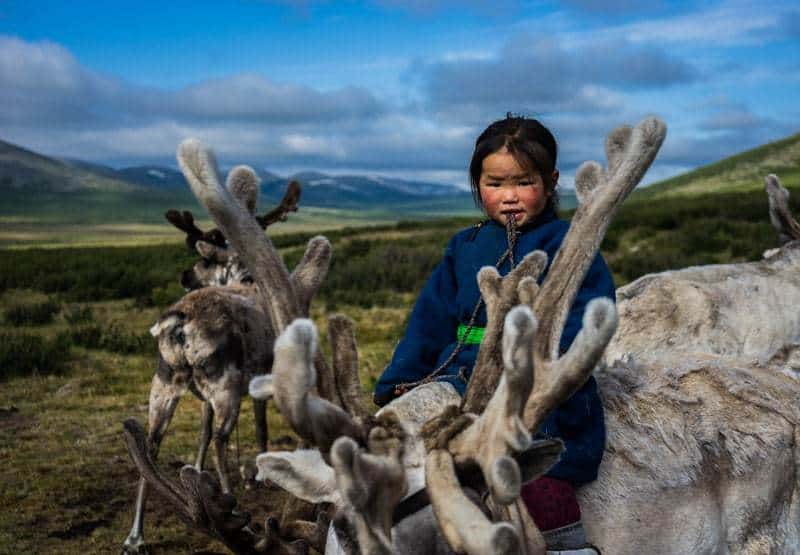
Hidden in an isolated corner of Northern Mongolia, straddling the border of Russian Siberia, a unique minority group lives in the sprawling tundra. Around 500 Dukha people live a remote nomadic life, migrating from place to place in search of valuable resources to continue their existence. Minority people can be found all throughout Asia, but the Dukha are notably different for the livestock that they keep. Not yaks, camels, goats or horses, but reindeer. Known as the Tsaatan people, these reindeer herders have been attracting international attention over the last few years for their unique and unchanged way of life.
We knew that if we ever came to Mongolia we would make sure that we travelled to the far north to visit these fabled people and their reindeer. As luck would have it we found ourselves in the region and immediately made it our priority to trek into the taiga.
From the town of Moron we travelled north by van and met up with a nomadic family. We rented their horses and took a two day trek to reach the distant taiga, camping along the way. Once we arrived we stayed with Magsar, Amgaa and their family of three. We spent three nights learning about their culture, helping with daily chores, herding the reindeer and simply experiencing how life goes on in the taiga. While not everything went smoothly, it was by far the most rewarding and memorable time of our travels.
This is our photo journey to the Tsaatan reindeer herders.
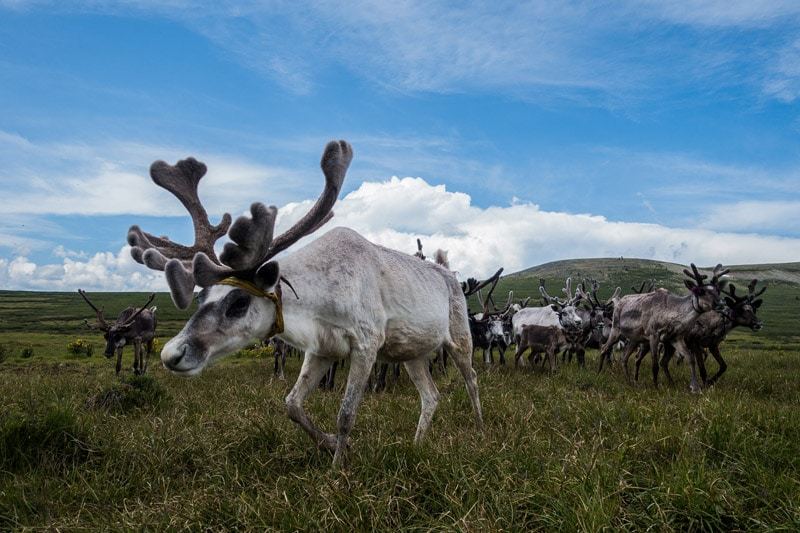
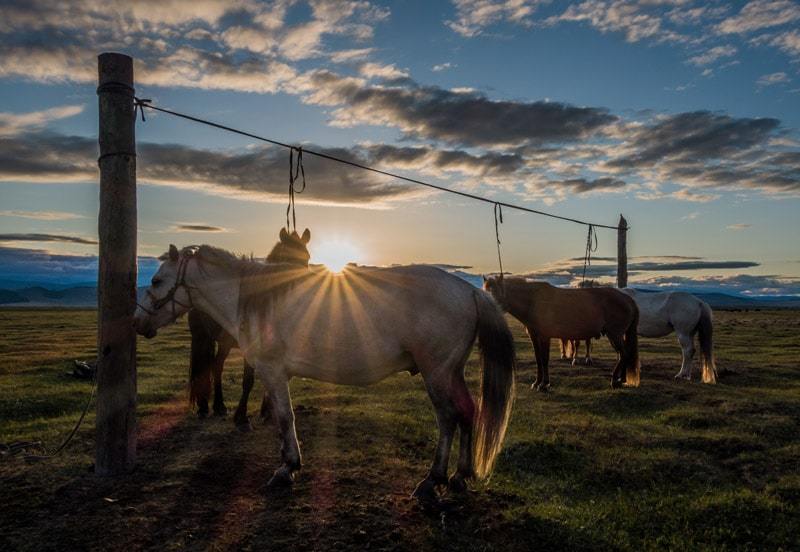
We began our journey with a 10 hour car ride to a tiny nomadic ger camp just outside the village of Ulaan Uul. We arrived just in time to watch the sunset, and then fell asleep on the floor of the ger surrounded by the family.
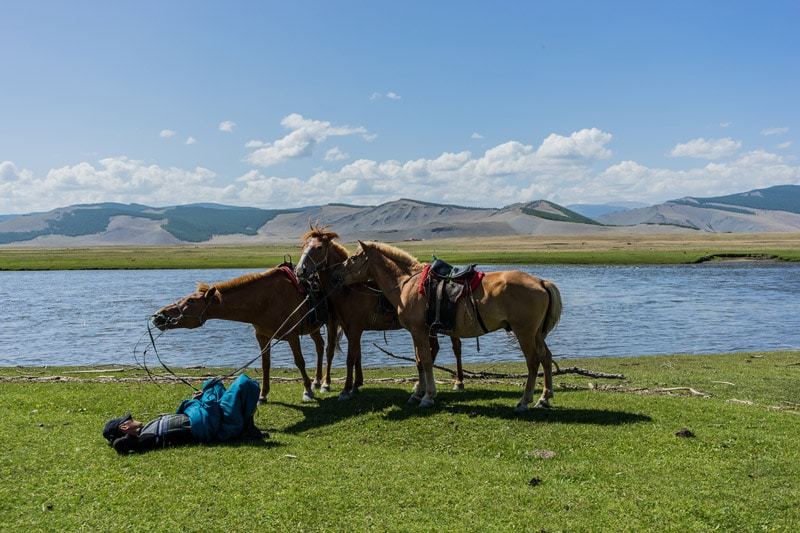
The first day’s horse trek was exhausting and far from ideal. We followed a road through infinite steppe for over eight hours. Underneath a pounding sun, with an inadequate water supply, we were forced to stop for countless rest breaks. Later we found out that our horse guides had taken us the wrong direction, therefore exposing us to unnecessary hours of trekking.
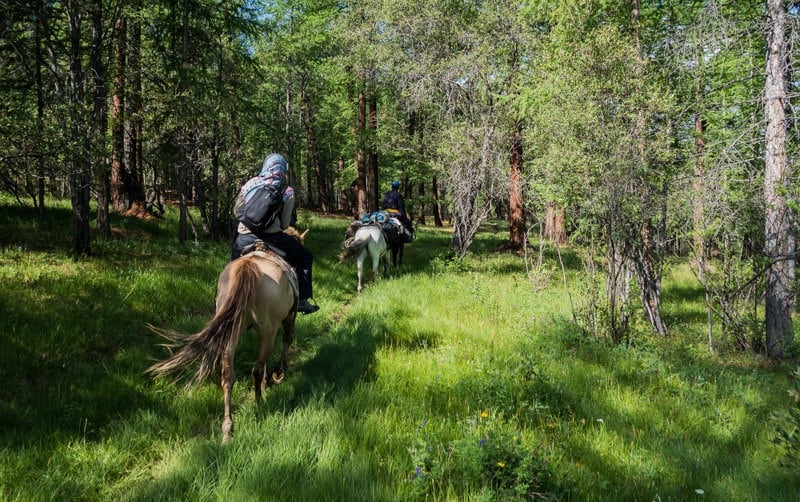
On the second day we finally reached the pine forests that we were told we would have been horse trekking through the entire time. Our friends had turned back due to a pre-exisiting injury, leaving just the two of us to continue on towards the taiga. Once we had left the steppe the scenery, and our moods, improved dramatically.
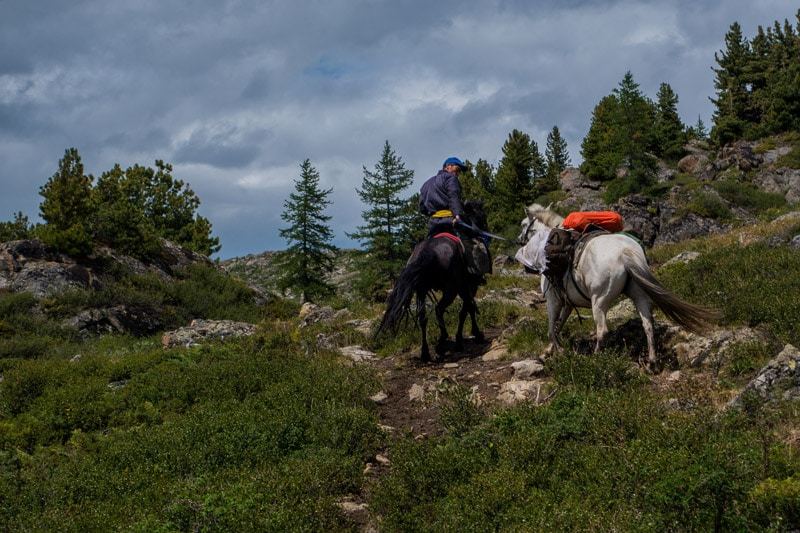
We rode through an intense storm which left the ground saturated and perilously muddy. Near the end of seven hours wandering, we reached the final hill to climb before we would arrive at the fabled taiga.
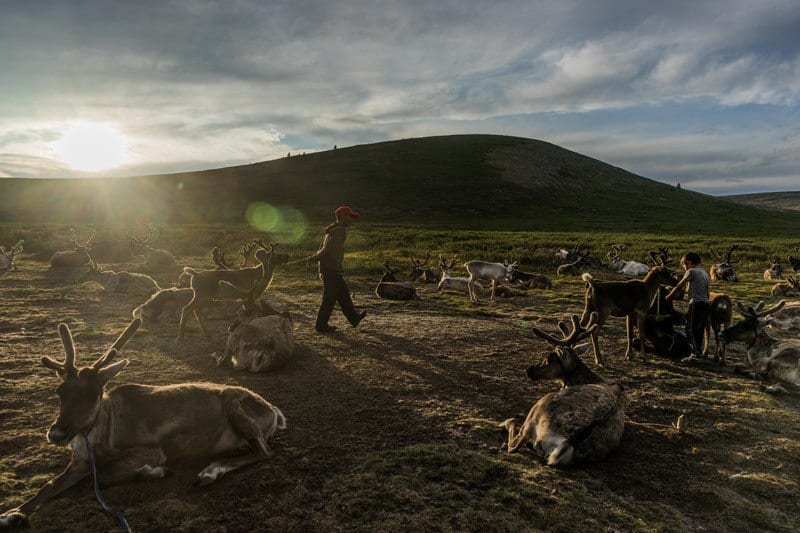
A sight that would stay with us forever – The first time we rode into the camp of Magsar, Amgaa and their family and were confronted with a herd of reindeer relaxing at dusk.
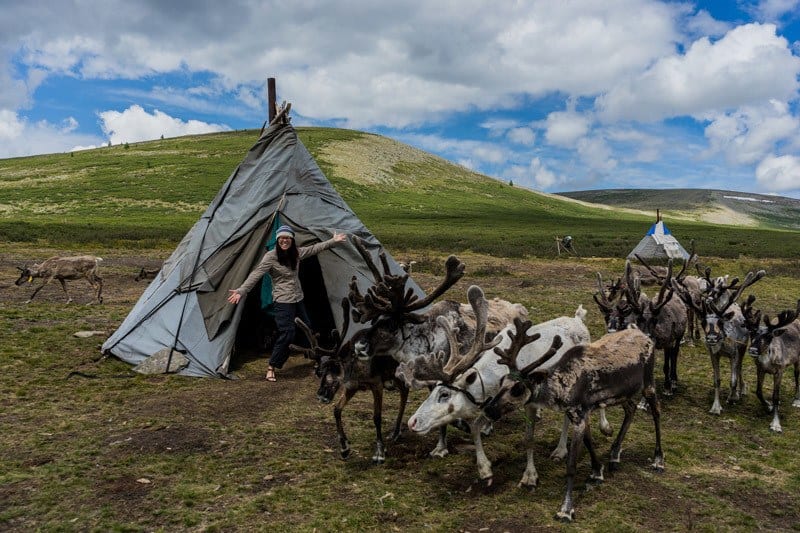
We were given an option of pitching our tent for free or staying in a spare teepee, known as an ortz, for $10 a night. We were more than happy to help contribute some money directly to the family and chose the teepee. Completely surreal.
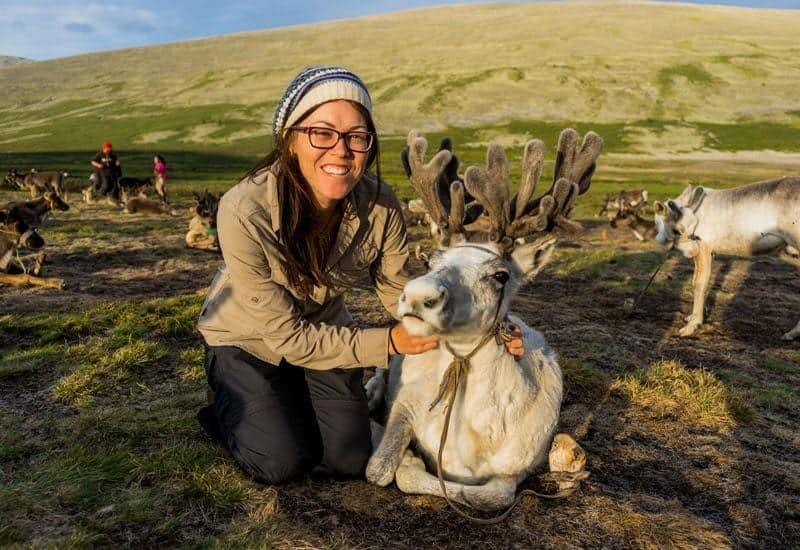
The Tsaatan people treat their reindeer like members of their family, as they are their primary source of food, milk, tools (made from their antlers) and transport. They very rarely eat reindeer meat, as they are more valuable to them alive than dead. Surprisingly the reindeer are completely tame, and used to human interaction.
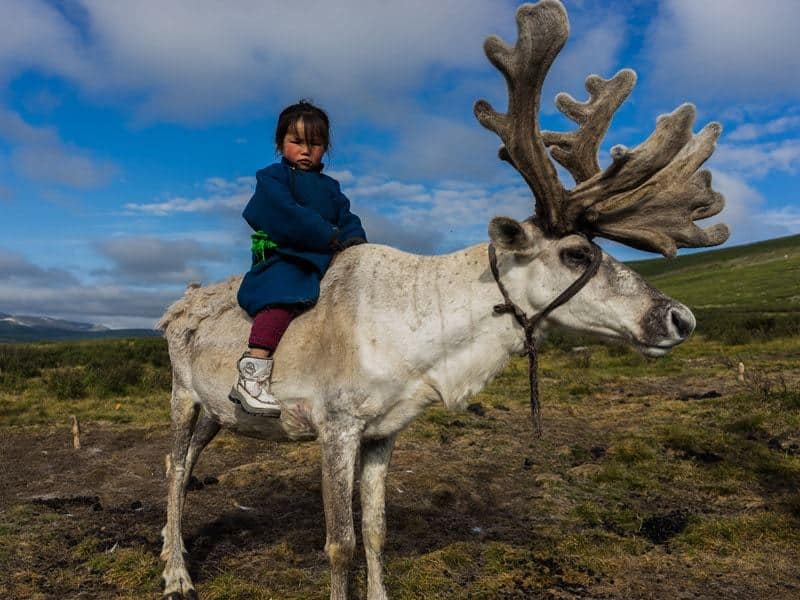
We awoke on our first morning and saw that the neighbours were packing up their camp. We wandered over to say hi and met this gorgeous three-year-old girl riding her white reindeer. We chatted to her mother with sign language and hand signals, and found out she had been riding independently from the age of one.
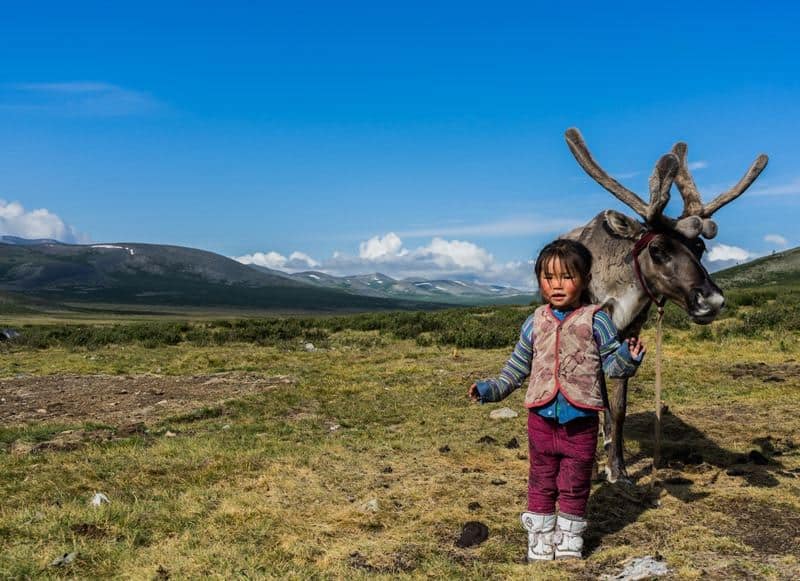
The girl was so photogenic. When we tried to photograph another reindeer she hopped off of hers and ran over to pose for the shot.
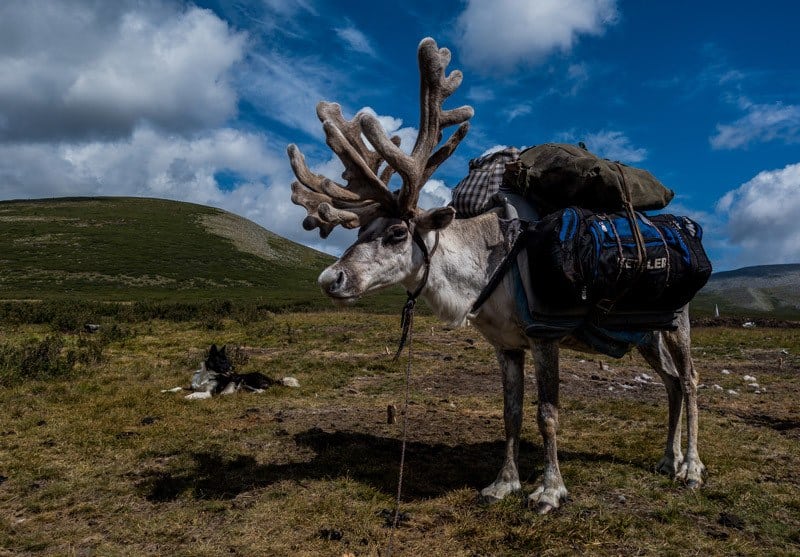
Living as true nomadic people, the Tsaatans pack their camps up and move from place to place searching for the special kind of lichen that their reindeer feed on. Their main method for transport is reindeer, of course.
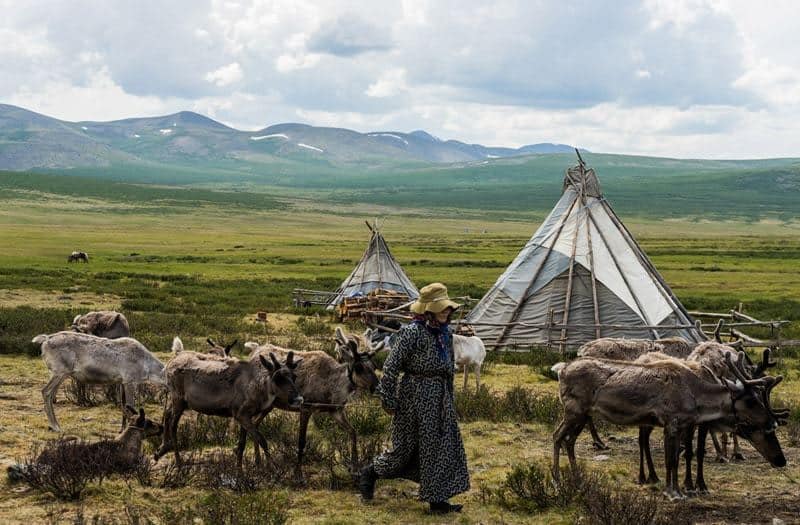
A day in the life of the Tsaatan people is quite unique to anything you could experience elsewhere. In the morning the reindeer are milked and then set free to wander the taiga. They show up periodically during the day and the Dukha people tend to them as they need.
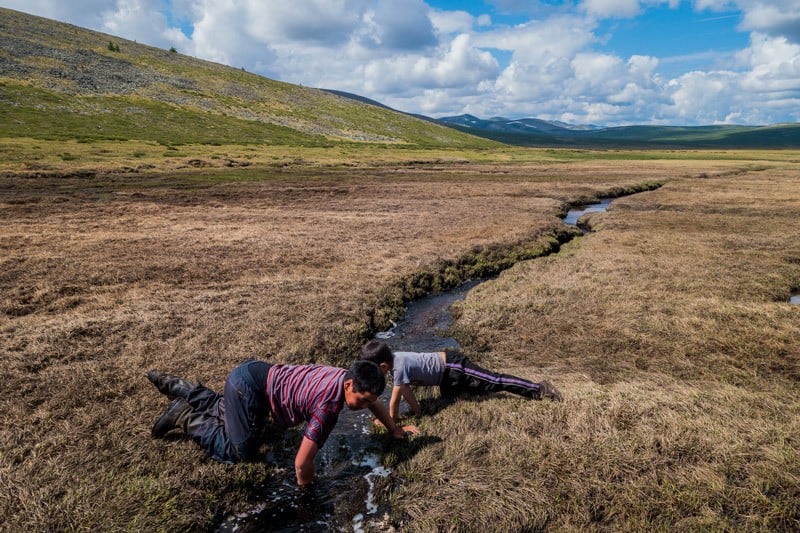
The diet of the Tsaatan people consists primarily of dairy products made from reindeer milk, reindeer meat, berries and bread. Another welcome staple is fish, which the men catch with their bare hands. Here you can see the two sons of the family trying their luck at catching dinner.
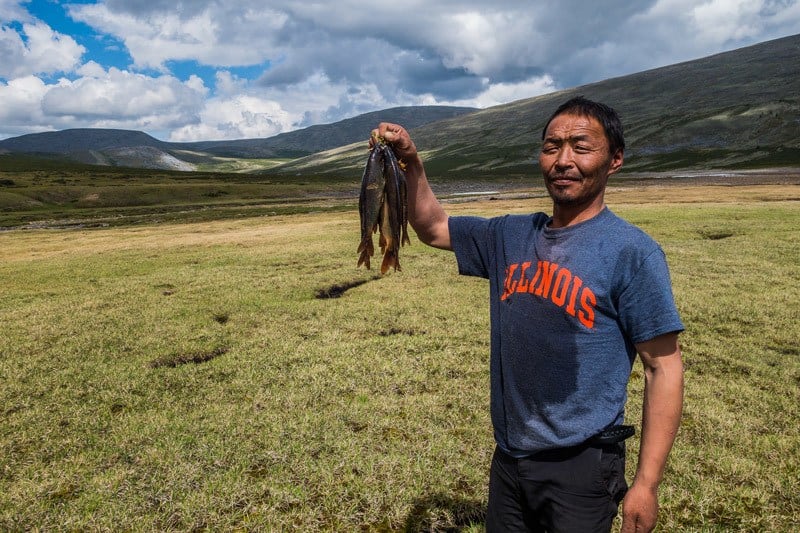
Magsar proudly showing off his daily catch. Dinner was delicious that night.
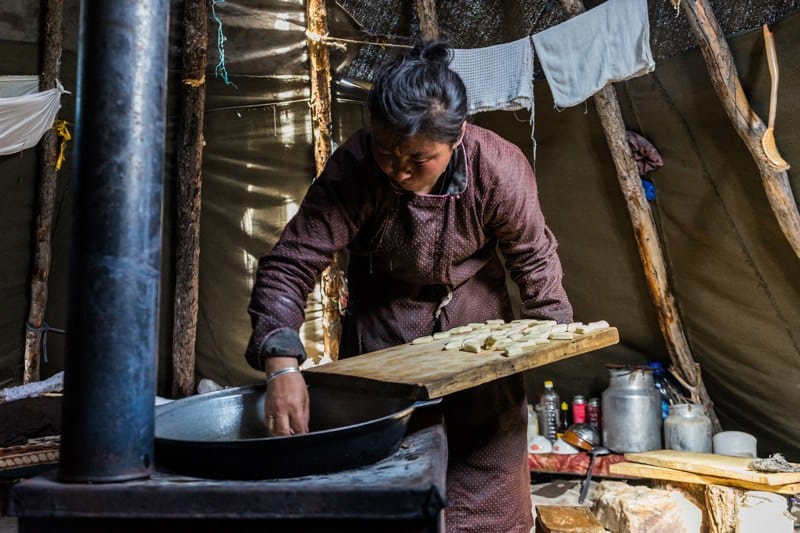
While life isn’t stressful in the taiga, the people are always busy. The women are constantly cooking and caring for the children, or running around with the reindeer. Here Amgaa is making fresh reindeer cheese and butter over a wood fire stove. With only one stove for cooking and providing heat, this is in constant use.

Dog and reindeer coexist in harmony up in the taiga.
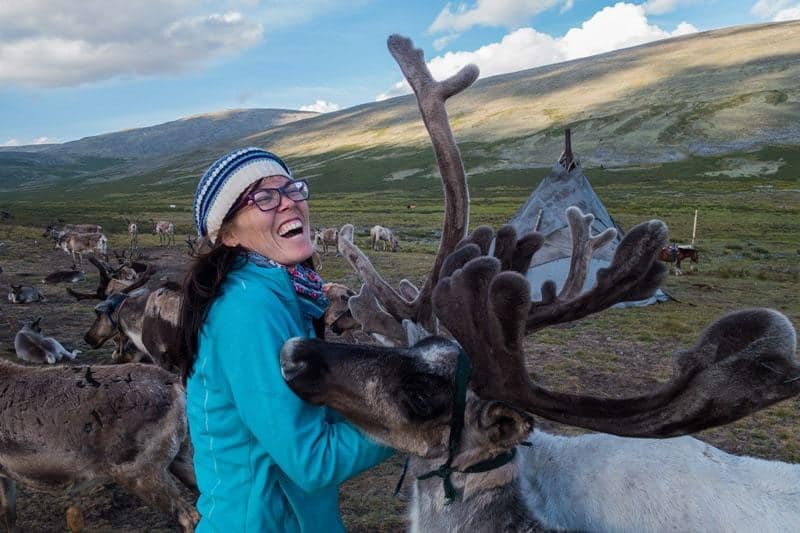
In the evenings the reindeer come trotting back to their home like clockwork. The family then collects the reindeer and ties them to stakes in the ground for the night. We were put to work by the kids, and were happy to help. The reindeer were not shy, and would nuzzle us with their furry antlers while licking us all over. Lesh lost it laughing as this one kept nibbling on her arm.
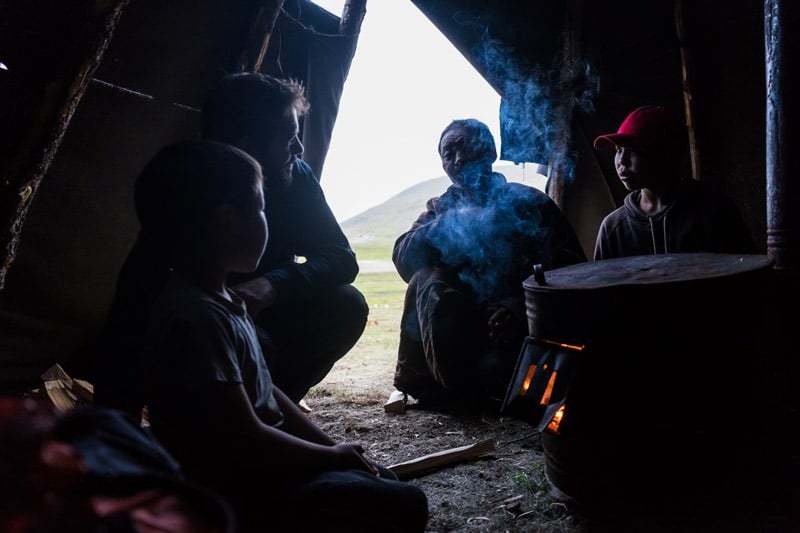
Just before the sun set Magsar and the boys would come into our ortz and light a fire for us. The nights were incredibly cold up in the taiga, and Magsar ensured we had enough wood to keep us going through most of the night. Once the fire was lit we would always sit and joke around, despite us not being able to speak to the same language.
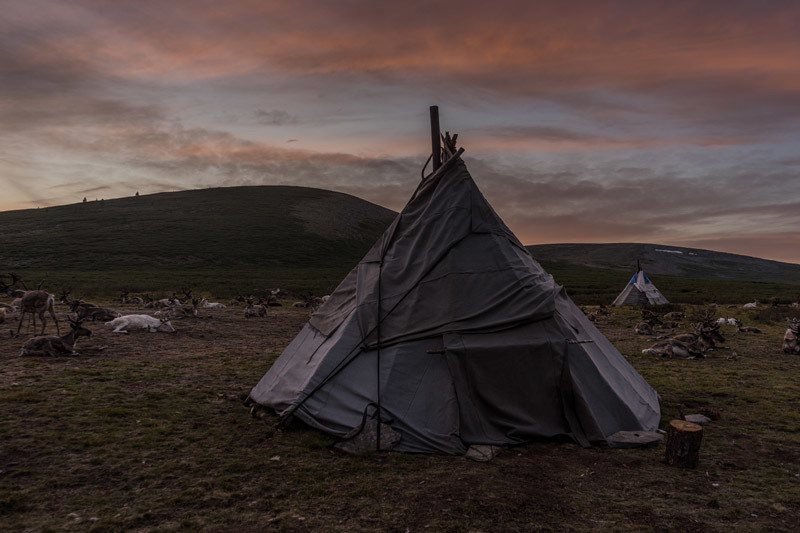
The sky turns crimson as night falls over the taiga.
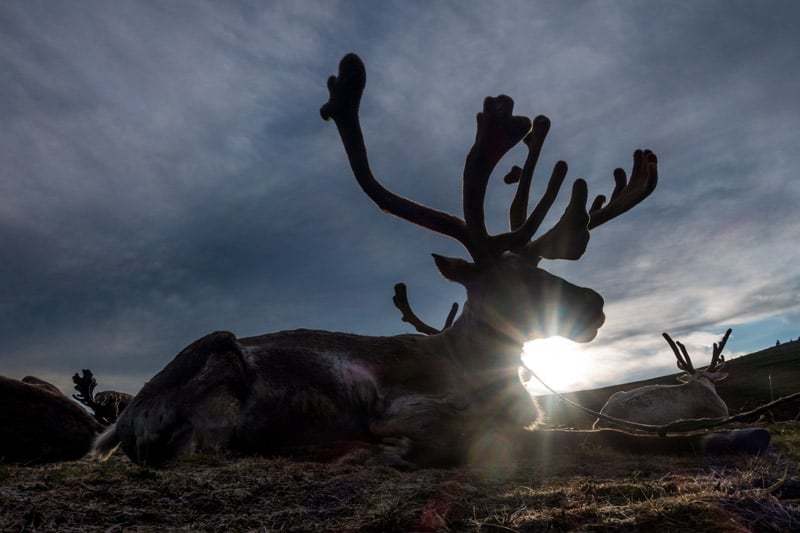
A reindeer-inspired sunset shot on final evening.
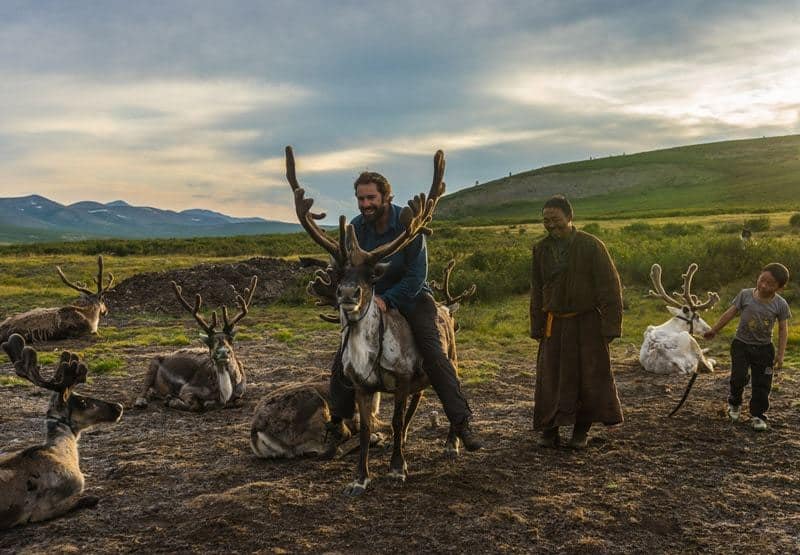
On our last night all the reindeer were tied up and everyone was getting ready for bed. Magsar then walked up to his largest and strongest reindeer and untied it. I said to him, “Wow Magsar, that one is big”, and he simply smiled. He slapped it on the back, looked at me and motioned to get on. Grabbing the rope I swung my legs over and Magsar gave the reindeer a slap on the butt. As it galloped off with me bouncing on top I could hear Magsar laughing hysterically. A moment I will never forget.
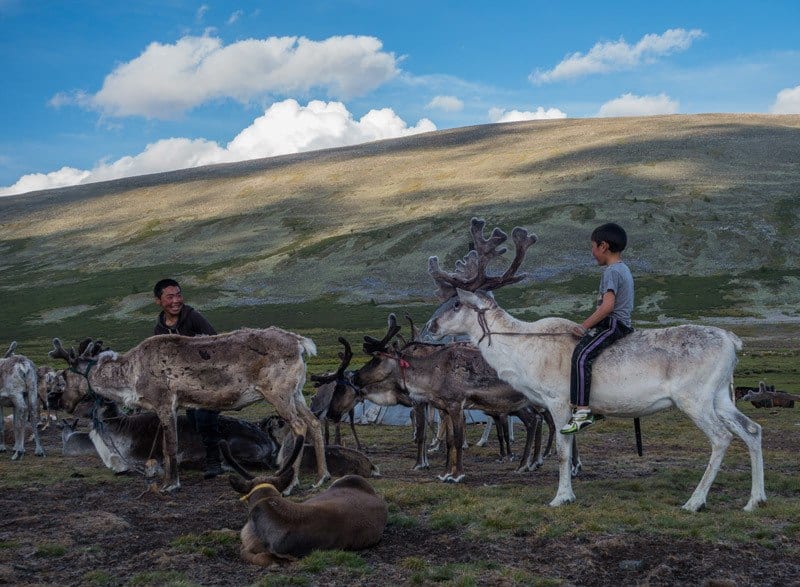
While riding a reindeer was a novelty for me, it is standard practice for the Tsaatan people.
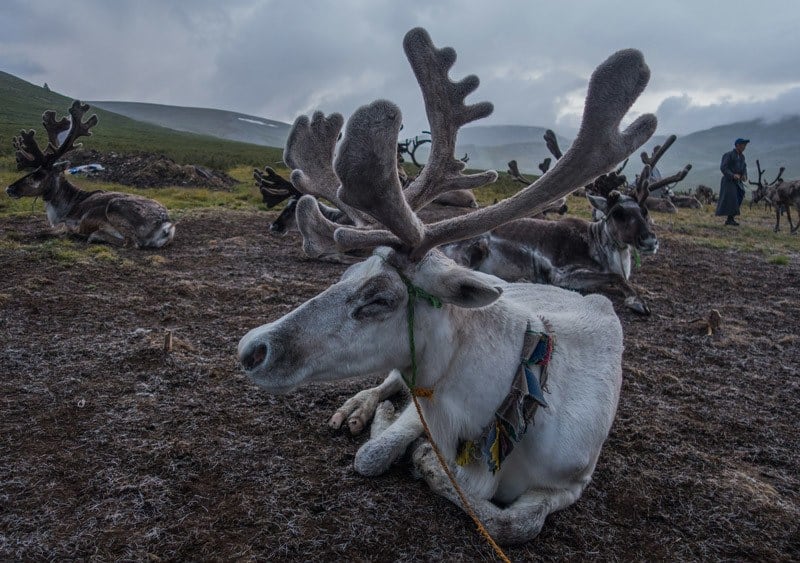
The reindeer do not resist when you tie them up at night. They know they are protected and have no reason to run.
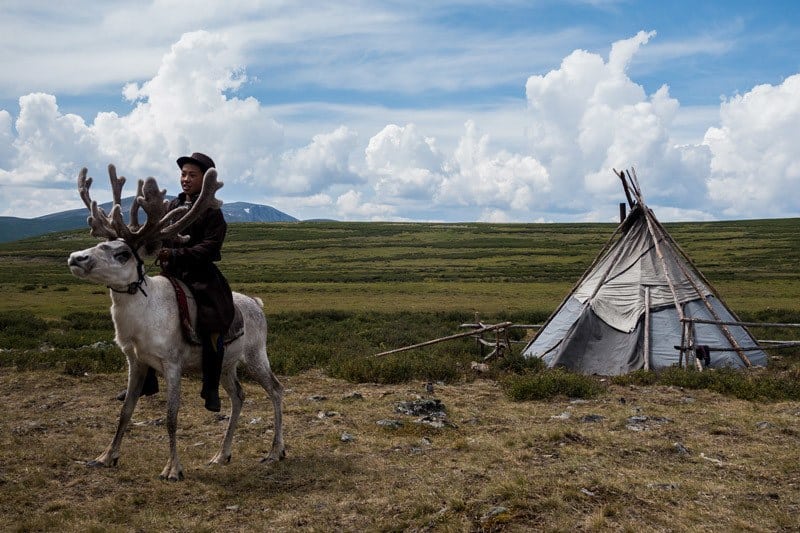
A young boy from another camp that we visited, happily posing for shots. His clothes and hat were his everyday wear.
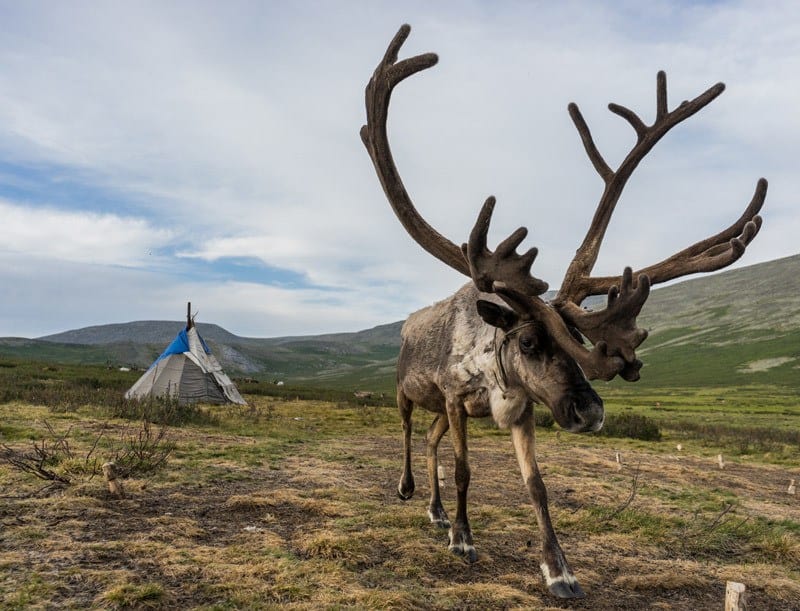
Every winter the antlers fall off of the reindeer, and grow back larger every summer. Full adult males look quite imposing with their branch-like horns, and it is not uncommon to meet many reindeer that have had their antlers broken from fighting.
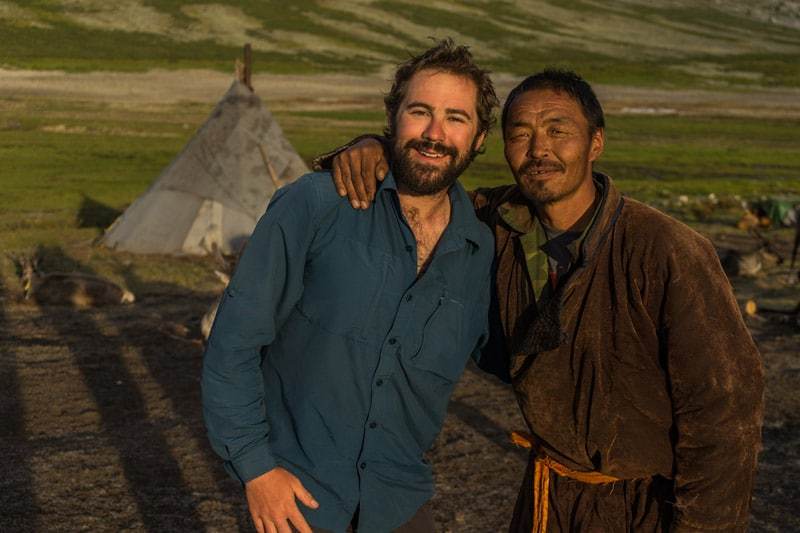
On our last day Magsar and I were chatting. He said in broken English, “Next year, come back.” When I told him that we could not, he nodded. “Ok, two years come back. With baby.”
Visiting The Tsaatan Reindeer People
To visit the Tsaatan reindeer herders it is recommended to book through the TCVC, or through a TCVC-approved agency. Unfortunately we organised our tour through Saraa from Saraa’s Guesthouse in Moron. Under no circumstance would we ever recommend dealing with this lady. We will not go into details of what went wrong and how she had lied to us about important aspects of the tour, but take our word that you should avoid her tours at all costs.
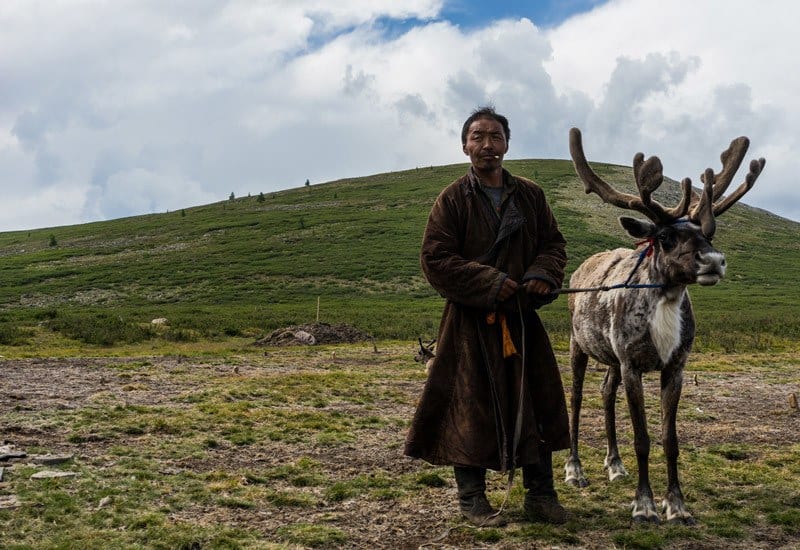
These photos of a lost Mongolian tribe are incredible
THERE AREN’T MANY “LOST” tribes any more — the realities of the modern world means that most formerly nomadic people have settled down into cities, and that virtually everyone, for good or for bad, has been brought into the global fold. The Dukha tribe is one of the rare exceptions. The Dukha are a Tuvan-Turkic tribe that lives on the border of Mongolia and Russia, and they are best known as reindeer herders. But their connection with animals extends far beyond reindeer.
Photographer Hamid Sardar Afkhami traveled to the Khovsgol province of Mongolia to take pictures of the few Dukha families that remain: there are only a few hundred people within 44 families left.
The children of the tribe are raised surrounded by reindeer, and they build a close connection.
The Dukha do not typically eat the reindeer unless the animals are no longer capable of helping them hunt or travel.
Unfortunately, the number of reindeer is dwindling, and there is no program to help replenish the reindeer from nearby Siberia.
Many of the Dukha make their living off of tourists who either want to ride domesticated reindeer or buy their crafts.
Otherwise, the Dukha hunt for their income or sustenance.
The Mongolia Taiga is a particularly challenging land — it is difficult to navigate and endures harsh winters.
The Dukha, though, have been doing what they are doing for hundreds of years under the Chinese, Russian, and Mongolian states.
The Dukha have a strong connection to their animals, and they believe the connection is spiritual.
The reindeer are totally domesticated — the other word for the Dukha is Tsaatan, which directly translates to “reindeer herder.”
The Dukha think of themselves as “sharing” the landscape rather than owning it.
It is perhaps for this reason their connection with the animals are so strong.
The Dukha also train wolves.
Another major element of live is hunting with Eagles.
Eagle hunting is an ages-old tradition, and is considered to be a particular honor.
Eagle hunters are well-respected within their tribe.
The Dukha have surprisingly been able to resist much of the influence from the outside world even into the 21st century.
It is perhaps because of their connection to nature and to the animals around them.
You can do more to help these indigenous communities survive here. 
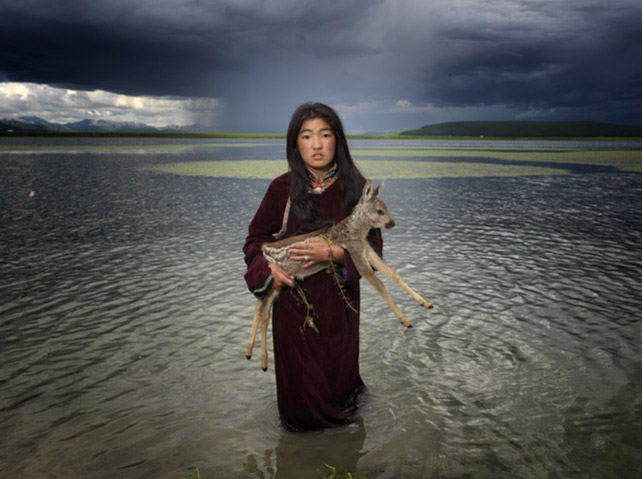
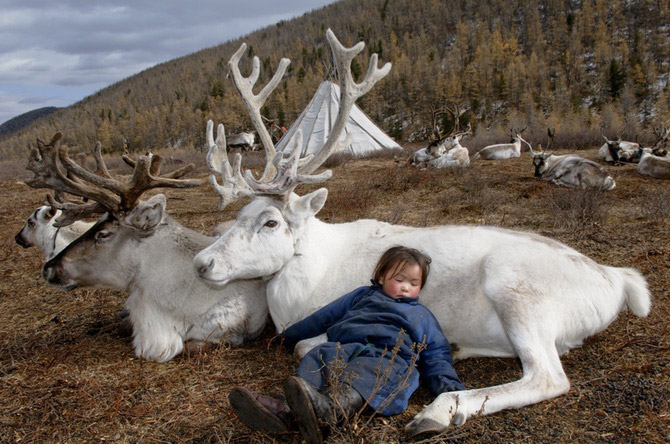

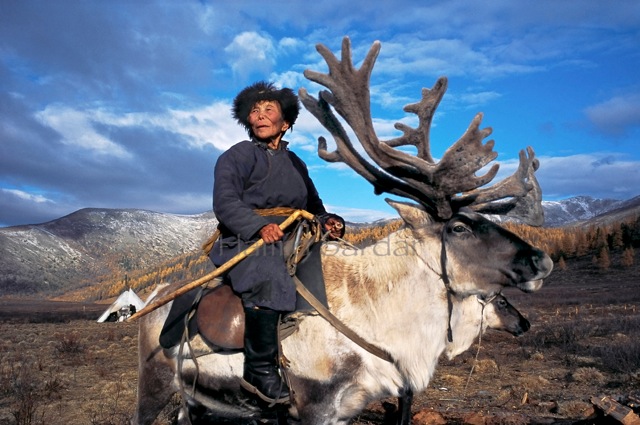

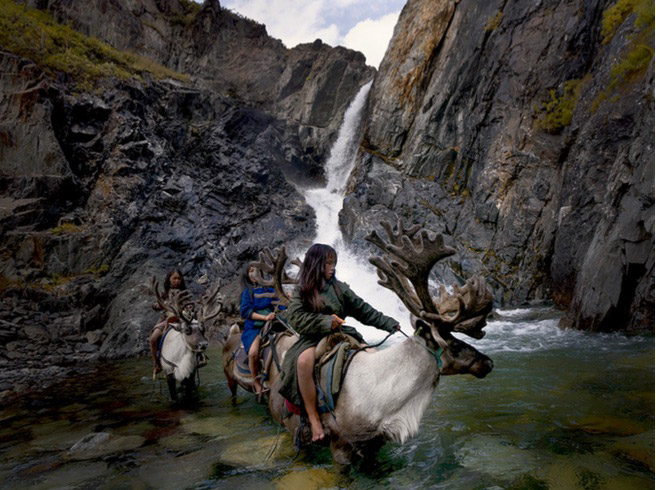
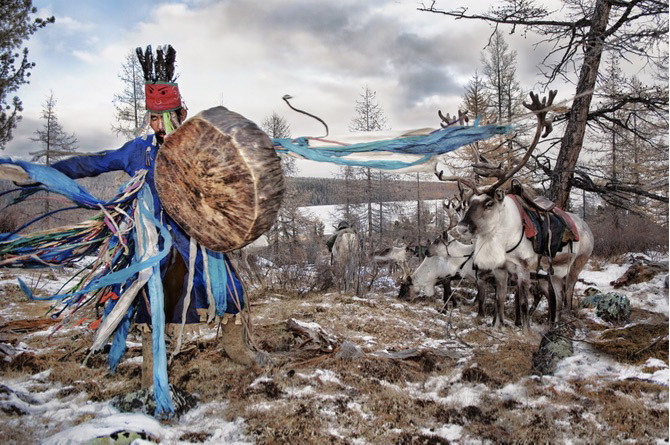
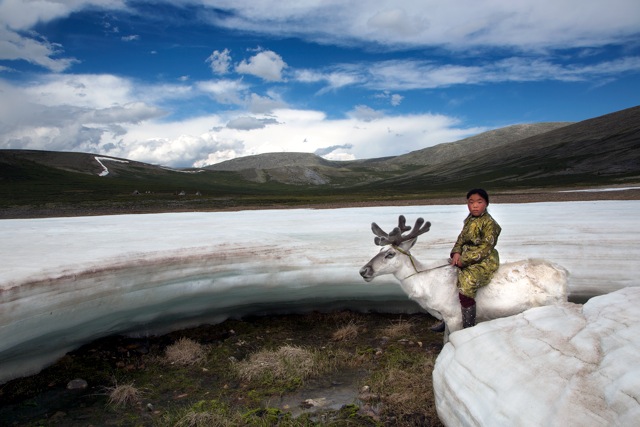
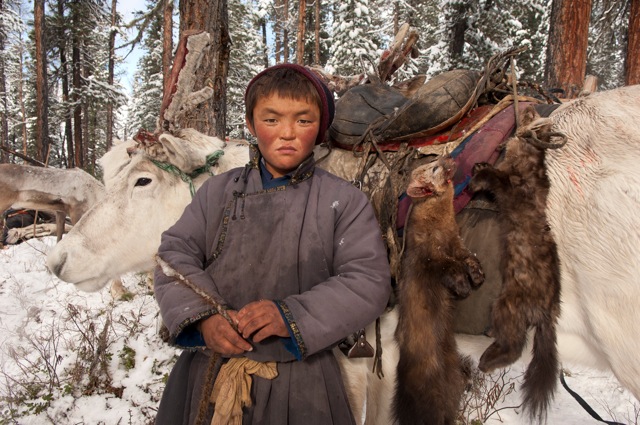
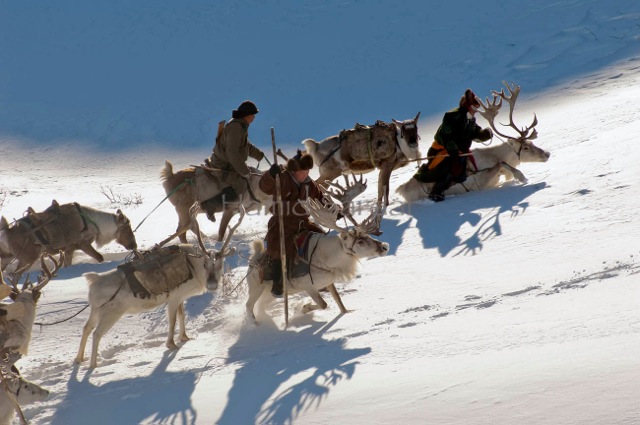

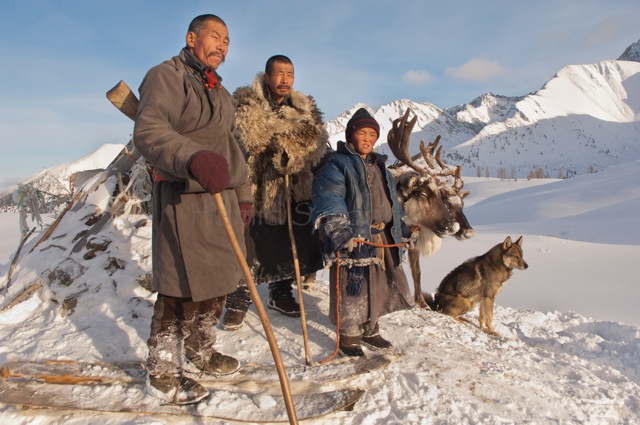
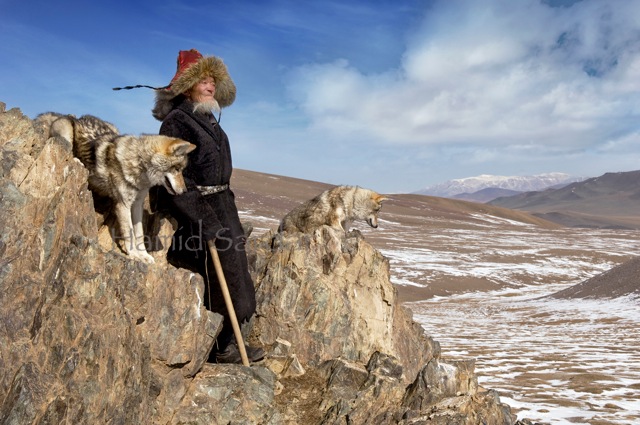
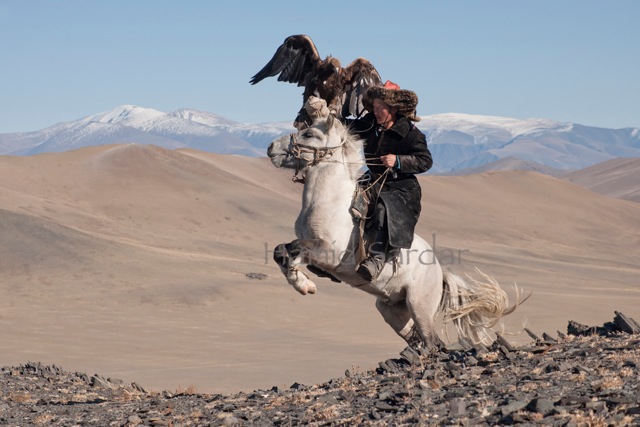
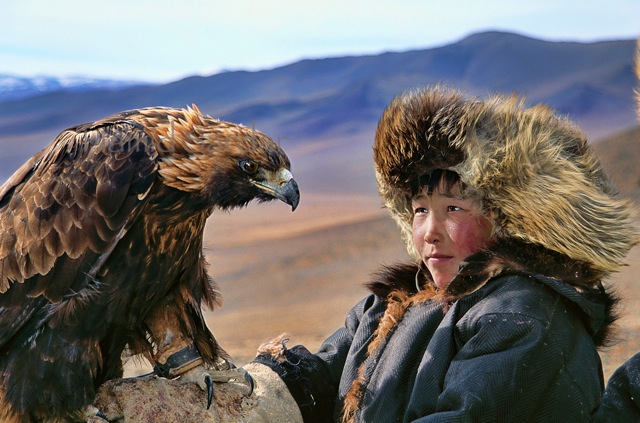

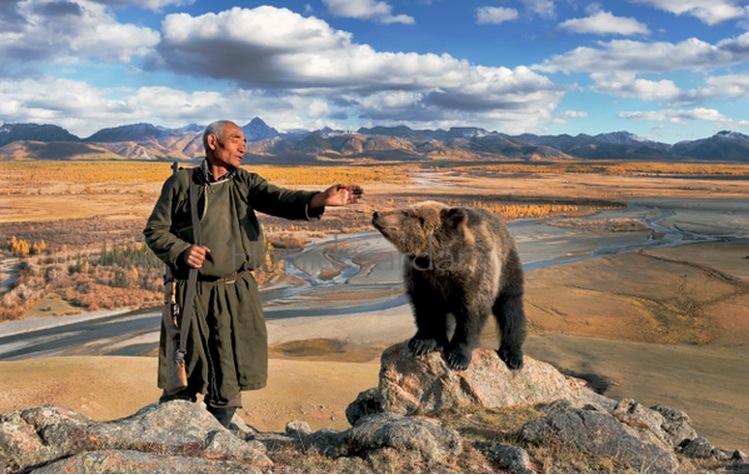
No comments:
Post a Comment
Comments always welcome!